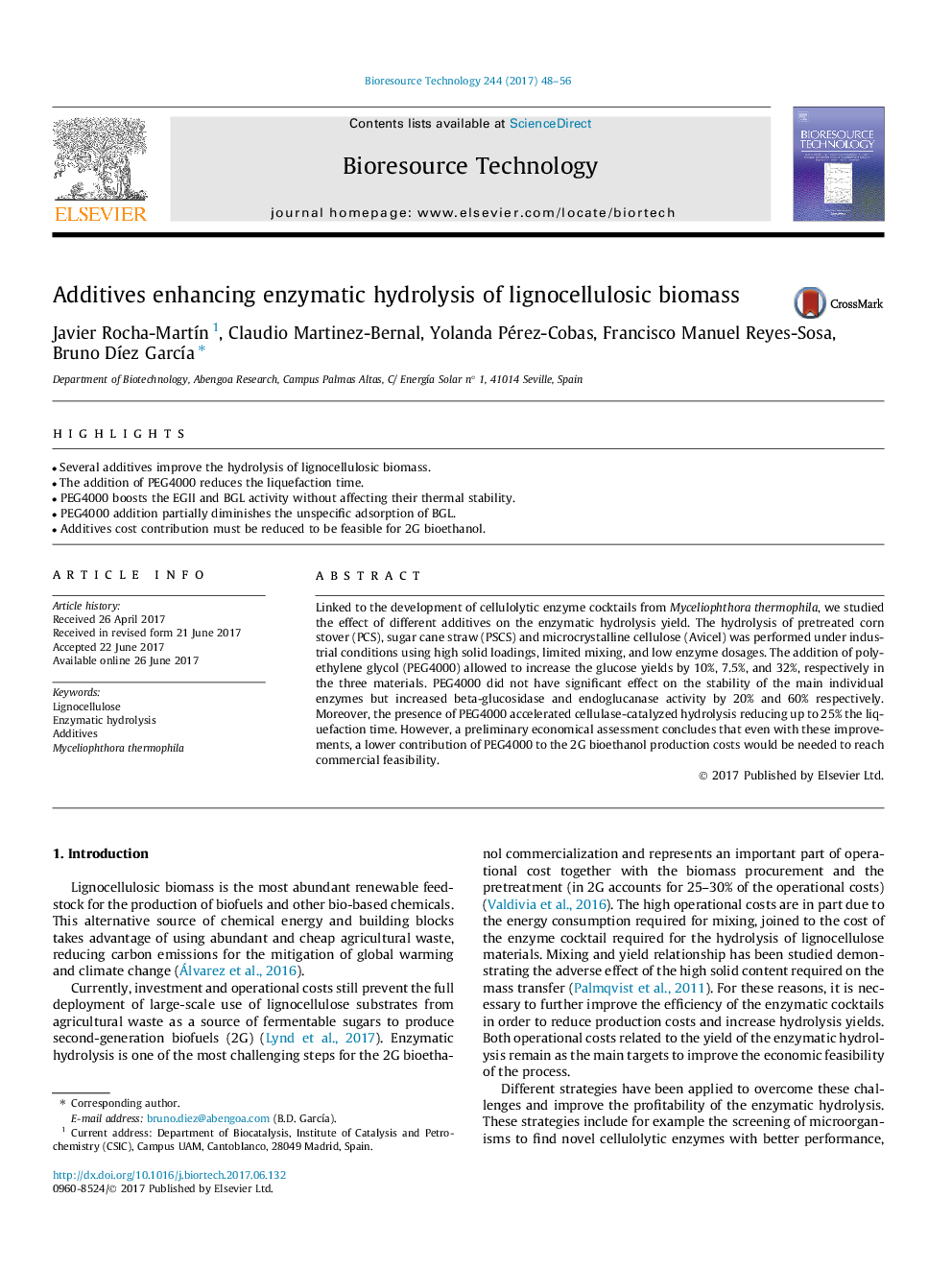| Article ID | Journal | Published Year | Pages | File Type |
|---|---|---|---|---|
| 4996596 | Bioresource Technology | 2017 | 9 Pages |
â¢Several additives improve the hydrolysis of lignocellulosic biomass.â¢The addition of PEG4000 reduces the liquefaction time.â¢PEG4000 boosts the EGII and BGL activity without affecting their thermal stability.â¢PEG4000 addition partially diminishes the unspecific adsorption of BGL.â¢Additives cost contribution must be reduced to be feasible for 2G bioethanol.
Linked to the development of cellulolytic enzyme cocktails from Myceliophthora thermophila, we studied the effect of different additives on the enzymatic hydrolysis yield. The hydrolysis of pretreated corn stover (PCS), sugar cane straw (PSCS) and microcrystalline cellulose (Avicel) was performed under industrial conditions using high solid loadings, limited mixing, and low enzyme dosages. The addition of polyethylene glycol (PEG4000) allowed to increase the glucose yields by 10%, 7.5%, and 32%, respectively in the three materials. PEG4000 did not have significant effect on the stability of the main individual enzymes but increased beta-glucosidase and endoglucanase activity by 20% and 60% respectively. Moreover, the presence of PEG4000 accelerated cellulase-catalyzed hydrolysis reducing up to 25% the liquefaction time. However, a preliminary economical assessment concludes that even with these improvements, a lower contribution of PEG4000 to the 2G bioethanol production costs would be needed to reach commercial feasibility.
